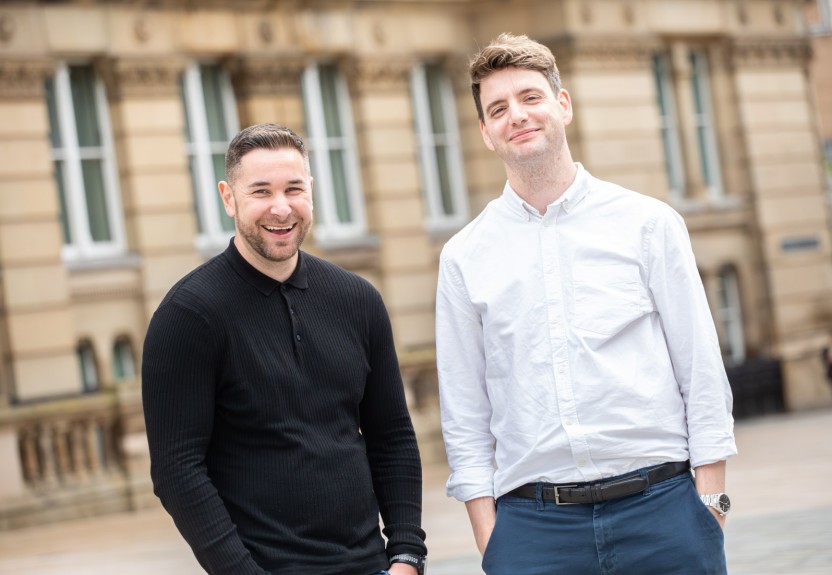As Premier Partners and early adopters of Google’s latest updates, we’re sharing what we’ve found so far with their latest, AI Max for Search. And we don’t hold back.
Marketers are flooded with buzzwords, trending tools and new software solutions, especially with AI platforms shaping the trajectory for agencies. One of the latest shiny toys has been Google’s AI Max for Search.
Depending on who you ask, it’s either a secret weapon or a budget-sucking black hole. Let’s cut through the noise and see what this thing really does, without the fluff or wild promises.
What Even is Google AI Max?
Google AI Max is essentially a mash-up of tools Google already had, bundled all into one tidy switch. These include:
• Broad match (finds similar searches to your keywords)
• Dynamic Search Ads (writes and targets based on your website)
• Automatically Created Assets (generates headlines and descriptions for you)
But Google loves to slap ‘AI’ on everything, and AI Max is their newest attempt to convince advertisers they’re one click away from marketing nirvana. In simple terms, it’s a setting on Google Ads search campaigns which lets Google take more control than ever before and decides what search terms to show your ads for, how your ads are written, and which landing page users see.
Press it, and Google’s new feature gets free rein to ‘optimise’ your campaigns. It’s like handing your car keys to a robot and saying, “You drive. I’ll just nap.” Sometimes that works, sometimes you wake up in a ditch.
Should You Use AI Max?
The AI augmentation of existing search campaigns seeps far beyond keywords. Instead, this voyage to reach greater engagement can increase lead quality and conversions. But will it stop dead in the water? Or can it help your clients really get their ‘sales’ going?
It wouldn’t be fair to give it some stick without giving the machine some credit. AI Max has its perks.
The Pros for AI Max
1. Less Work, More Reach
It saves time. You don’t have to dig through keyword research or write endless variations of ads. Google does it for you, sometimes even better than a human (and yes, that stings a little). It can also put your ads in front of people you might never have targeted. That means more reach and potentially more conversions. If you’re trying to scale and don’t mind Google experimenting with your budget, it could be a win.
2. Smarter Matching
AI Max learns from your site, ads and user behaviour. It might decide that someone searching for ‘pet-safe chewing sticks’ should see your dog treat ad, even if you only targeted ‘natural dog chews’. In other words, it can read between the lines… or at least pretend to.
3. Personalisation Power
It adapts ads and landing pages to each user. Theoretically, this should mean higher conversion rates. Think of it as an ad campaign that shape-shifts for every customer. That’s clever marketing when it works.
The Case Against AI Max
Now, here’s the other side. And it’s a big one.
1. You Lose Control
AI Max might decide your ads should show for searches that have nothing to do with your business. Like selling vegan dog treats and showing up for ‘vegan restaurants’. Yikes. This happens because AI loves data, and sometimes data gets creative. You can’t see or control everything it’s doing, and that’s unnerving when it’s spending your money.
Zahra, our PPC Manager, said that with one of her clients, it had broadened reach, but the traffic was largely irrelevant, despite filtering out inappropriate search terms and refining audience segments.
2. It Loves the Easy Wins
AI Max chases the lowest-hanging fruit, often your branded traffic. You might find most of your ‘new’ conversions came from people already searching for your business. That’s like claiming you made a new friend because your mum called. Unless you set strong guardrails, you risk cannibalising your best-performing campaigns.
3. It’s Risky for Some Industries
If you’re in a regulated space, like finance, health or legal, letting AI write ads for you could land you in hot water. It doesn’t always know what it’s legally allowed to say, and “oops” isn’t much of a defence when compliance comes knocking.
4. It Needs Data, and Lots of It
AI Max performs best when Google already knows that works for your account. If you don’t have a lot of conversion data, it’s basically guessing. And guessing gets expensive fast.
The Real Story of AI Max: It’s Just Evolution, Not Revolution
Let’s be honest, this isn’t the dawn of a new ad era. It’s just Google repackaging old tricks with a fresh coat of AI paint. The tech isn’t new. The automation isn’t new. The difference is how much control Google has.
It’s clever marketing on their part, though: take several features that many advertisers avoided, rename them and push them as ‘AI-driven’. Boom, there’s an instant buzz.
Does it mean AI Max is useless? Absolutely not. It’s simply not magic or a one-stop solution. If we go back to our car analogy, Google AI Max is essentially a self-driving mode for your campaigns. Handy on a smooth highway, disastrous on a mountain road.
How Should You Use AI Max Without Regretting It?
If you’re curious, and it’s good to be, test it. But test it smart.
• Start small: Don’t switch your best campaign to AI Max. Use a mid-performing one where the stakes are lower.
• Use experiments: Run a 50/50 split between your regular setup and AI Max, then compare results fairly.
• Add guardrails: Include your best keywords as negatives so AI Max doesn’t eat its own tail.
• Keep your site clean: Since Google pulls content from your website, make sure your pages are accurate, current and brand-safe.
• Be patient, not passive: It may perform worse before it performs better. Watch it closely and don’t assume the robot knows best.
AI Max can absolutely help, especially if your account has lots of conversion history and solid tracking. But if you’re flying blind or running on a small budget, then proceed with caution.
“I wouldn’t recommend using this option if you already know that Broad Match keywords or Dynamic Search Ads (DSA) aren’t suitable for your client,” Zahra said. “It’s far from a plug-and-play solution and requires continuous supervision to avoid wasted budget.”
So, Should You Use It?
If your campaigns have hit a ceiling and you’re ready to experiment, it’s worth giving AI Max a go. Treat it like a new intern: bright, promising, but not ready to run the company.
If your website’s a mess, or your industry’s regulated, or maybe your budget’s tighter than a jar lid after arm day: hold off.
AI Max will get smarter over time. It’s learning, after all. But right now, it’s not a game-changer. It’s just the next logical step in Google’s journey towards full automation and full control.
What Do We Think at M3?
AI Max shows where Google Ads is heading: automation, personalisation and a lot less manual control. You don’t have to love it, but you do need to understand, and use it on your terms.
At M3, we help brands stay ahead of the curve without falling into the AI hype trap. Our team blends data, creativity and strategy to make sure every click counts, whether you’re testing new features or scaling proven campaigns.
If you want to know how AI Max could fit into your wider digital strategy, of if you’d rather let someone else wrangle Google’s ever-changing toolbox, we’re here to help.
Drop us a line and let’s explore how M3 can take your brand’s digital marketing to the next level.






